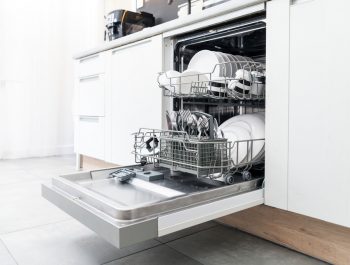
If you’ve recently noticed that your integrated washing machine is making excessive noise, moving around, or leaking water, it might be because the machine is not level. An unlevel washing machine can lead to a host of problems, including strain on the motor, broken shock absorbers, and even floor damage. This comprehensive guide will walk you through the process of leveling your integrated washing machine, ensuring its efficient and smooth operation.
To level an integrated washing machine, first, empty the drum and check the floor levelness. Adjust the front leveling feet by turning them clockwise or counterclockwise, checking the level with a spirit level after each adjustment. Repeat the same process with the rear legs, if they are manually adjustable. Once the machine is level, secure the legs by tightening any locking nuts. Recheck the level every six months. Always disconnect the machine from the power source before starting and ensure it’s installed on a level, solid, and non-slippery floor.
Why is Leveling Important?
A leveled washing machine ensures proper functioning and prevents potential damages. It minimizes vibration, noise, and ‘machine walking’ during the spin cycle. If left unattended, an unlevel machine may strain its motor and components, leading to long-term damage. Regularly checking the level of your machine every six months can avert these issues and prolong the lifespan of your washer.
Tools Needed to Level an Integrated Washing Machine
Before you start the leveling process, gather the essential tools. You will need a spirit level to ascertain if the machine is level. An adjustable wrench or pliers will come in handy for adjusting the leveling feet. If your machine has manual-adjustment rear legs, you might also need a spanner.
Steps to Level an Integrated Washing Machine
- Empty the Drum: Before starting, ensure that the drum is devoid of water. If safe, you can initiate the spin cycle to drain the drum.
- Check the Floor: Use a spirit level to check the levelness of the floor under the worktop. If it’s uneven, consider leveling it before installing the washing machine.
- Adjust the Front Legs: With the washer in position, adjust the front leveling feet. Turn them counterclockwise to lower the washer feet or clockwise to raise them. Make minor adjustments and check the spirit level after each adjustment.
- Level the Machine Front-to-Back: Place the spirit level front-to-back on top of the washer. If the bubble is centered, the machine is level. If not, and your machine has manual-adjustment rear legs, repeat the same procedure as with the front legs.
- Secure the Legs: Once the machine is level, tighten any locking nuts on the legs to secure them in place.
- Recheck the Level: Every six months or so, rock the machine gently and place a spirit level on top (side-to-side and front-to-back) to ensure it remains level.
Safety Precautions
When leveling your washing machine, always disconnect it from the power source and drain hose. Ensure that the machine is installed on a level, solid, and non-slippery floor. Maintain at least 10 cm of free space from the sides and back of the machine. Always read the user manual for important warnings and safety instructions. Regularly check the water hoses for leakage, bulging, cracks, and replace them if necessary.
Professional Leveling Services
If you’re unsure about leveling your washing machine yourself, consider hiring a professional. Professional services can ensure your machine is properly leveled and installed, saving you time and effort while maintaining your warranty.
Conclusion
Leveling your integrated washing machine is a crucial step in ensuring its proper functioning and longevity. By following the steps outlined in this guide, you can ensure your machine operates smoothly and efficiently. Regular checks and adjustments will minimize potential damages and repairs in the long run.
Frequently Asked Questions
What is ‘machine walking’?
‘Machine walking’ refers to the movement of the washing machine during the spin cycle. If your washing machine is not properly leveled, it can start to ‘walk’ or move around your laundry room due to the force of the spin cycle.
How can I tell if my washing machine is unlevel?
A clear sign of an unlevel washing machine is excessive noise or movement during the spin cycle. Another sign could be water leakage from the machine. You can also use a spirit level to check the levelness of your machine.
Can I use any other tool instead of a spirit level?
A spirit level is the most accurate tool for checking the levelness of your washing machine. However, there are smartphone apps available that can serve as a basic level.
How often should I check the levelness of my washing machine?
It’s recommended to check the levelness of your washing machine every six months. Regular checks can help you avoid any potential damages and ensure the longevity of your machine.
What should I do if my floor is uneven?
If your floor is uneven, you may need to use shims to help level your washing machine. Alternatively, you may want to consider having your floor leveled by a professional.
What are the risks of not leveling my washing machine?
An unlevel washing machine can lead to excessive noise, movement, and water leakage. Over time, it can strain the motor and other components, leading to long-term damage and potentially costly repairs.












